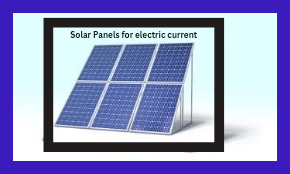
Solar panels produce electricity through the photovoltaic effect. Here’s a simplified explanation:
- Photovoltaic (PV) Cells: Solar panels are made up of many photovoltaic cells. These cells are typically made of semiconductor materials like silicon.
- Absorption of Sunlight: When sunlight (photons) hits the solar panel, it is absorbed by the semiconductor material.
- Generation of Electrons: The absorbed photons transfer their energy to electrons in the semiconductor material, causing them to become energized and move freely.
- Electric Field: Due to the internal structure of the PV cell, an electric field is created that causes the energized electrons to move in a specific direction, creating an electric current.
- Electricity Generation: The flow of electrons creates an electric current that can be captured as electricity. This current is in the form of direct current (DC) electricity.
- Conversion for Use: To use this electricity in homes and businesses, the DC electricity generated by solar panels is typically converted to alternating current (AC) using an inverter. AC is the standard form of electricity used by most appliances and the electrical grid.
In summary, solar panels convert sunlight directly into electricity through the photovoltaic effect, harnessing the energy of photons to generate a flow of electrons, which then creates usable electrical power.